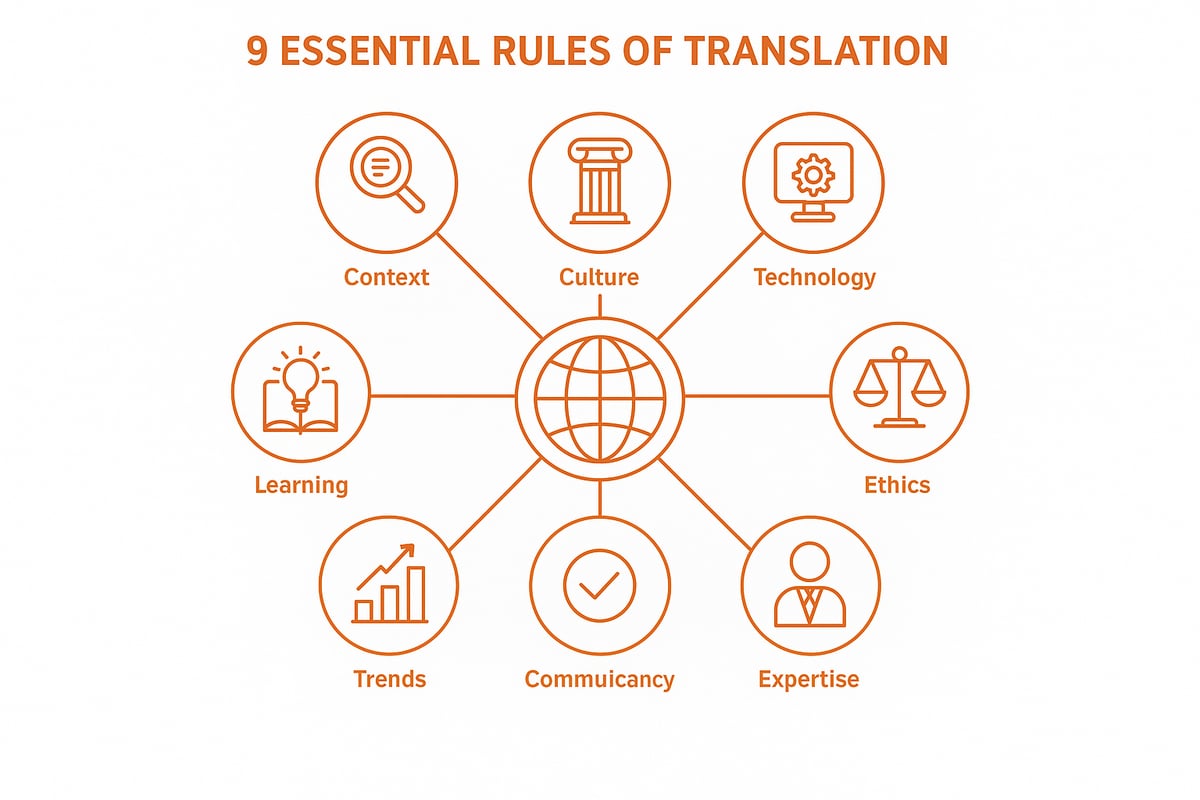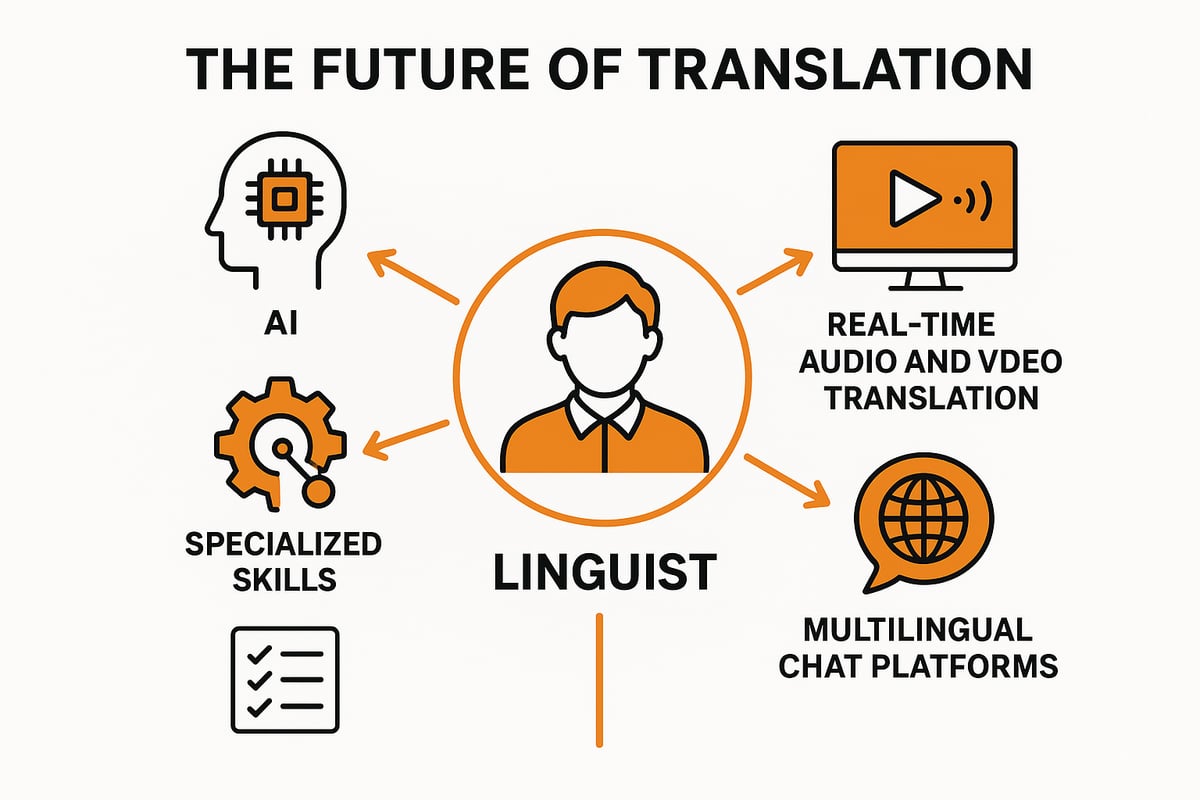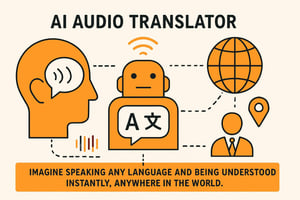In 2025, online English translation tools have reached new heights, offering instant access to...
9 Essential Rules of Translation Every Linguist Needs in 2025
As we approach 2025, the world’s appetite for precise and culturally aware translation continues to grow. International business, media, and public services are reaching more people than ever, making linguistic expertise a vital asset.
To thrive, linguists must master the rules of translation that guide clarity, accuracy, and influence in every project. The landscape is shifting, and staying ahead means understanding not just language, but also context, technology, and ethics.
In this article, you’ll discover 9 essential rules every linguist needs to succeed. From cultural nuance to the latest technology and ethical standards, these practical insights will help you excel in an increasingly multilingual world.
The Evolving Landscape of Translation in 2025
The field of translation is undergoing rapid transformation as we approach 2025. New demands, technologies, and expectations are reshaping the rules of translation for linguists worldwide. Understanding this evolving landscape is essential for anyone aiming to excel in multilingual communication.

The Impact of Globalization and Digital Transformation
Globalization is driving unprecedented growth in cross-border communication. Businesses are expanding internationally, requiring fast and reliable translation for diverse markets. The rules of translation now demand real-time solutions as public sectors, including emergency services, increasingly rely on multilingual communication.
Digital transformation is at the forefront, with over 75% of internet users preferring content in their native language (CSA Research, 2023). This surge in demand compels linguists to adapt quickly, ensuring their translations are both accurate and culturally sensitive. The pressure to deliver at scale is higher than ever.
Advances in Translation Technology
Technology is rapidly changing how linguists approach their craft. AI-powered machine translation and computer-assisted translation (CAT) tools are now standard, offering speed and consistency across large projects. Hybrid models, blending AI with human expertise, are gaining traction.
For instance, tools like Google Translate have introduced context-aware features, while DeepL continues to expand its language offerings. To stay competitive and follow the latest rules of translation, linguists must invest in continuous learning to keep pace with these innovations. For a broader view of emerging trends, see this Translation industry trends 2025 overview.
The Expanding Role of Linguists
Linguists are no longer just language converters. Their responsibilities now include cultural mediation, ensuring messages resonate in every market. The rules of translation emphasize specialization, with experts needed in legal, medical, technical, and emergency fields.
Real-world events, such as multilingual communications during natural disasters, highlight the need for precise, context-aware translation. Linguists must bridge not only language gaps but also cultural divides, making their role more vital and complex than ever before.
Challenges Facing Modern Translators
Modern translators face a unique set of challenges. Balancing speed and accuracy is a constant struggle, especially as clients demand quick turnaround without sacrificing quality. The rules of translation also require inclusivity, ensuring minority and endangered languages are not left behind.
Ethical dilemmas arise in sensitive contexts, from legal documents to emergency alerts. Translators must navigate these with professionalism, always prioritizing integrity and the well-being of those they serve. Success depends on constant vigilance and adaptability.
Data-Driven Insights
Recent data underscores the changing landscape. In 2024, 62% of translators reported using at least two digital translation tools every day, reflecting the integration of technology into daily workflows. Case studies, such as large-scale global health campaigns, demonstrate how following the rules of translation leads to successful outcomes.
Table: Translation Tool Usage (2024 Survey)
| Tool Type | Daily Users (%) |
|---|---|
| CAT Tools | 62 |
| Machine Translation | 55 |
| Glossaries | 48 |
Harnessing data and technology, while adhering to best practices, ensures linguists are prepared for the future of translation.
9 Essential Rules of Translation Every Linguist Needs in 2025
Navigating the globalized world of 2025 requires more than just fluency in multiple languages. To thrive, linguists must master the essential rules of translation. These rules of translation ensure clarity, accuracy, and cultural resonance in every project. Below, we break down the nine must-follow rules of translation, offering actionable insights to help you excel in the evolving field.

1. Prioritize Context Over Literal Accuracy
One of the most foundational rules of translation is to understand context before focusing on literal meaning. Words rarely exist in isolation. Context shapes intent, emotion, and accuracy.
Consider idioms, slang, or technical jargon. A word-for-word approach can lead to confusion or even offense. For example, translating “Break a leg” literally into another language could bewilder the audience or carry unintended meanings.
To avoid these pitfalls:
- Analyze client briefs and source materials thoroughly.
- Use parallel texts and bilingual corpora to validate context.
- Consult with subject matter experts when unsure.
A recent study found that 68% of translation errors in 2024 resulted from context misunderstandings. Always remember, the rules of translation require you to look beyond words and into meaning. Mastering context is not just a skill, it is a necessity.
2. Embrace Cultural Sensitivity and Localization
Next among the rules of translation is cultural sensitivity. Language reflects culture, and successful translation bridges more than words—it connects beliefs, customs, and expectations.
Mistakes in this area can be costly. For instance, global marketing campaigns have failed due to poor localization, such as color choices that carry negative connotations or humor that falls flat.
Best practices include:
- Consulting native speakers for nuanced feedback.
- Conducting cultural audits before launch.
- Adapting humor, symbols, and colors for each target market.
Transcreation, or creative translation, is increasingly important in advertising and media. By embracing this rule of translation, you ensure content resonates authentically in every market.
3. Leverage Technology—But Don’t Rely on It Alone
The rules of translation in 2025 require a balanced approach to technology. AI, machine translation, and CAT tools offer speed and scalability, but they are not infallible.
Machines excel at handling large volumes and maintaining consistency, but they often miss nuance, tone, and context. For instance, even advanced systems like DeepL still struggle with literary translations.
To maximize quality:
- Use post-editing workflows to refine machine output.
- Combine AI with human expertise for best results.
- Stay up to date with ongoing tech training.
Translation professionals who follow this rule of translation ensure both efficiency and excellence, leveraging technology as a tool—not a substitute.
4. Maintain Confidentiality and Ethical Standards
Ethical responsibility is a cornerstone of the rules of translation. Linguists often handle sensitive data in legal, medical, and emergency contexts. Safeguarding privacy and impartiality is non-negotiable.
Consider GDPR and other data protection laws. Breaches can have severe consequences, including loss of trust and legal penalties. In the past, mishandling confidential information has led to high-profile failures.
To uphold this rule of translation:
- Follow strict guidelines for data handling.
- Practice transparency and integrity in all projects.
- Seek guidance when ethical dilemmas arise.
Ethical behavior ensures not only compliance but also a reputation for trustworthiness in the translation industry.
5. Master Subject Matter Expertise
The rules of translation demand more than language skills. Deep subject matter expertise is critical, especially in fields like legal, medical, and technical translation.
Errors in these areas can have serious repercussions. For example, a mistranslated medical instruction can endanger patient safety. That is why continuous professional development is essential.
Key strategies:
- Pursue relevant courses and certifications.
- Collaborate closely with subject matter experts.
- Participate in peer review for quality assurance.
For more on the importance of specialization, see this Specialized translation areas overview. By mastering this rule of translation, you ensure both accuracy and credibility in every project.
6. Ensure Consistency Across All Content
Consistency is one of the most overlooked rules of translation. Maintaining uniform terminology and style is vital, especially in large projects or brand campaigns.
Tools such as glossaries, translation memories, and style guides are invaluable. For example, keeping brand messaging consistent across languages prevents confusion and strengthens identity.
Practical tips:
- Regularly update glossaries and style guides.
- Use translation memories to track repeated terms.
- Implement version control for larger teams.
According to recent data, 23% of client complaints in 2023 were due to inconsistency. Adhering to this rule of translation builds trust and professionalism.
7. Communicate Clearly with Clients and Stakeholders
Effective communication is essential in the rules of translation. Understanding client goals and expectations helps deliver work that meets their needs.
Set up feedback loops and review processes for each project. Managing revisions efficiently reduces misunderstandings and project delays.
Helpful tools include:
- Project management platforms for task tracking.
- Version control systems for document changes.
Proactive communication leads to higher client satisfaction. This rule of translation fosters collaboration and ensures successful project outcomes.
8. Stay Updated on Industry Trends and Standards
The rules of translation evolve rapidly. Staying current with industry standards, best practices, and technology is imperative.
Join professional organizations like ATA or ITI. Attend conferences, webinars, and workshops regularly. Review updates to ISO standards for translation services.
For example, new quality assurance benchmarks adopted in 2025 have set higher expectations for translators. By following this rule of translation, you remain competitive and informed.
9. Invest in Continuous Learning and Professional Growth
The final rule in the rules of translation is to never stop learning. The field is dynamic, with constant changes in technology, language pairs, and specialization.
Pursue new certifications and participate in online courses, forums, and mentorship programs. Networking with peers offers valuable support and knowledge sharing.
A recent report found that translators who actively upskill earn 30% more. Lifelong learning is not just an option, it is essential to a sustainable and successful career in translation.
The Future of Translation: Skills and Tools for Success
The future of translation is rapidly transforming as technology, culture, and communication needs evolve worldwide. To remain effective, linguists must adapt their rules of translation to embrace new tools, platforms, and skills. As we look ahead, these changes signal a dynamic era where adaptability, expertise, and ethical standards will define success.

The Rise of Multimodal and Real-Time Translation
Translation is no longer limited to static text. In 2025, multimodal solutions integrate audio, video, and text, enabling seamless communication across channels. Real-time translation is especially crucial during emergencies and live broadcasts, where speed and clarity can save lives.
AI-powered interpretation tools are now commonplace, supporting interpreters during high-pressure events. For example, hybrid teams of humans and machines ensure accuracy and speed in public safety communications. To learn more about this integration, see AI and human interpreters in 911. As these innovations grow, the rules of translation must emphasize adaptability and precision across all media formats.
The Demand for Multilingual Communication Platforms
The demand for multilingual platforms is surging, with organizations seeking instant translation across customer service, healthcare, and public safety. Since 2022, real-time translation tools have seen a 40% increase in adoption, reflecting the need for fast, accurate, and scalable solutions.
Modern platforms support dozens of languages, ensuring inclusivity and responsiveness. The rules of translation now require linguists to work efficiently within these digital ecosystems. Staying current with platform updates and understanding their limitations is essential for delivering high-quality results to diverse audiences.
Essential Skills for Tomorrow’s Linguists
Tomorrow’s linguists must excel in adaptability, technological literacy, and cultural intelligence. Collaboration with both AI and human colleagues is fast becoming the norm. Hybrid translation teams, combining machine efficiency with human insight, are now standard in global organizations.
Key skills for success include:
- Mastery of advanced translation software
- Strong cross-cultural communication abilities
- Ethical decision-making in technology use
- Continuous professional development
By integrating these skills into their workflow, linguists ensure that the rules of translation remain relevant and effective in a fast-changing industry.
Preparing for Emerging Challenges
Emerging challenges include ensuring inclusivity for underrepresented languages and managing quality at scale. Linguists must also implement robust ethical frameworks, especially when working with AI-assisted translation tools.
To address these challenges, professionals should:
- Advocate for minority and endangered languages
- Develop scalable quality assurance processes
- Stay informed on industry standards and guidelines
By proactively adapting their rules of translation, linguists can build resilient careers and contribute to a more connected, multilingual world.
Building a Sustainable Translation Career in 2025
Building a sustainable translation career in 2025 requires more than linguistic skill. The ever-changing industry landscape means linguists must keep pace with new technology, shifting client needs, and the evolving rules of translation.
Adaptability is vital. Specializing in high-demand fields—such as legal, medical, or technical translation—can provide stability and higher rates. At the same time, diversifying your service offerings protects your career from market fluctuations. Many professionals succeed by combining translation with localization, editing, or project management.
To stand out, focus on personal branding and a strong online presence. Develop a portfolio that demonstrates mastery of the rules of translation and showcases your unique value. Digital platforms and remote work have opened global opportunities, allowing linguists to work with clients worldwide. Recent AI in translation industry statistics show that those who embrace digital tools and automation see increased efficiency and reach.
Here are proven strategies for long-term success:
- Join professional networks and language associations.
- Regularly update your skills through courses and certifications.
- Balance freelance and in-house roles to suit your lifestyle.
- Set clear boundaries to prevent burnout.
- Stay informed on translation best practices to maintain quality and client trust.
Ultimately, a sustainable career is built on continuous learning and adaptability. By following the essential rules of translation, staying current with industry trends, and nurturing your professional reputation, you can achieve both longevity and satisfaction in your work.

As we look ahead to 2025, it’s clear that mastering translation goes far beyond knowing two languages—it’s about context, culture, ethics, and leveraging the right technology for every critical moment. Whether you’re managing multilingual emergencies or striving for accuracy in high-stakes scenarios, having the right tools and support makes all the difference. If you want to see how real-time translation and communication solutions can elevate your work and help you serve communities better, I encourage you to Book a Demo and experience the future of language access firsthand.



